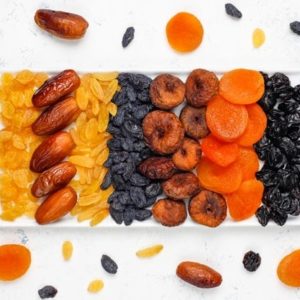The freeze-drying process was first done after World War II because of the need for foods to be preserved and stored in the absence of freezers and refrigerators. The end products of this process are known to us as freeze-dried foods.
Freeze drying was first used and was commonly used in creating instant coffees, but as of today, this process is also applicable and can also be done on vegetables, fruits, fish, seafood, meats, and even dairy products.
The Freeze-Drying Process
Freeze-drying is a form of food drying wherein food moisture is removed to prolong the food’s life span and at the same time retain almost all the nutritional compounds of the foods. It is done through a process called lyophilization.
Lyophilization is a dehydration process for perishable foods to be preserved and to make the items more convenient and easier to bring anywhere. This will eventually prolong the shelf life of the food.
Freeze-drying removes water from perishable goods to prolong their shelf life. Oil-based foods were not recommended to undergo a freeze-drying process for they will not freeze dry well because of their oil contents. Oil-based foods include peanut, butter, peanut butter, honey, syrup, and others.
Foods That Can Be Freeze-Dried
Several fruits and vegetables can be put under the freeze-drying process. You can freeze-dry carrots, onions, corn, tomatoes, beans, and many other vegetables in your kitchen.
The fruits that were often freeze-dried are apples, pineapples, bananas, mangoes, grapes, lemons, and your favorite berries.
Almost all kinds of meats can be freeze-dried, as well as poultry supplies such as eggs, cheese, and milk.
Rehydrating Your Freeze-Dried Foods
Most of the freeze-dried foods in the market are eaten by pouring them with boiling water or boiled water. Other pre-packaged freeze-dried foods require a lot of water but others can only handle small amounts.
Other foods need to be soaked in a bowl of cold water before cooking, and others just need a sprayful amount of water. Some of them are sensitive enough and tend to get soggy if poured in too much water.
Advantages of Freeze-Dried Foods
Freeze-dried foods are typically used by the military, backpackers, hikers, astronauts, and boaters. They are so light that it is easier for them to carry them wherever they go.
Freeze-dried foods can last for an average of 25 to 30 years. The moisture of the food makes it perishable, by removing it, the shelf life of the food is prolonged.
The food’s original taste, nutrition, shape, and size are almost retained and these foods do not require refrigeration and can be placed in your emergency food pantry.
Freeze-Dried Foods as Emergency Foods
Freeze-dried foods can be a home essential that every household must have especially during emergencies such as natural calamities and disasters that can happen anytime.
It may cost a bit expensive but this is an investment that is worth spending. These freeze-dried foods will be your emergency supply during disasters and calamities wherein most food stores such as supermarkets and groceries were closed.
Generally, you can make your freeze-dried foods using a food dehydrator. But, this will cost you not only a lot of money but also time and effort. There are a variety of brands that offer pre-packed and delicious freeze-dried foods at very affordable prices. Check out this site about freeze-dried foods for more information.
Read More: Could there be a difference between Key Lime and Lime?


